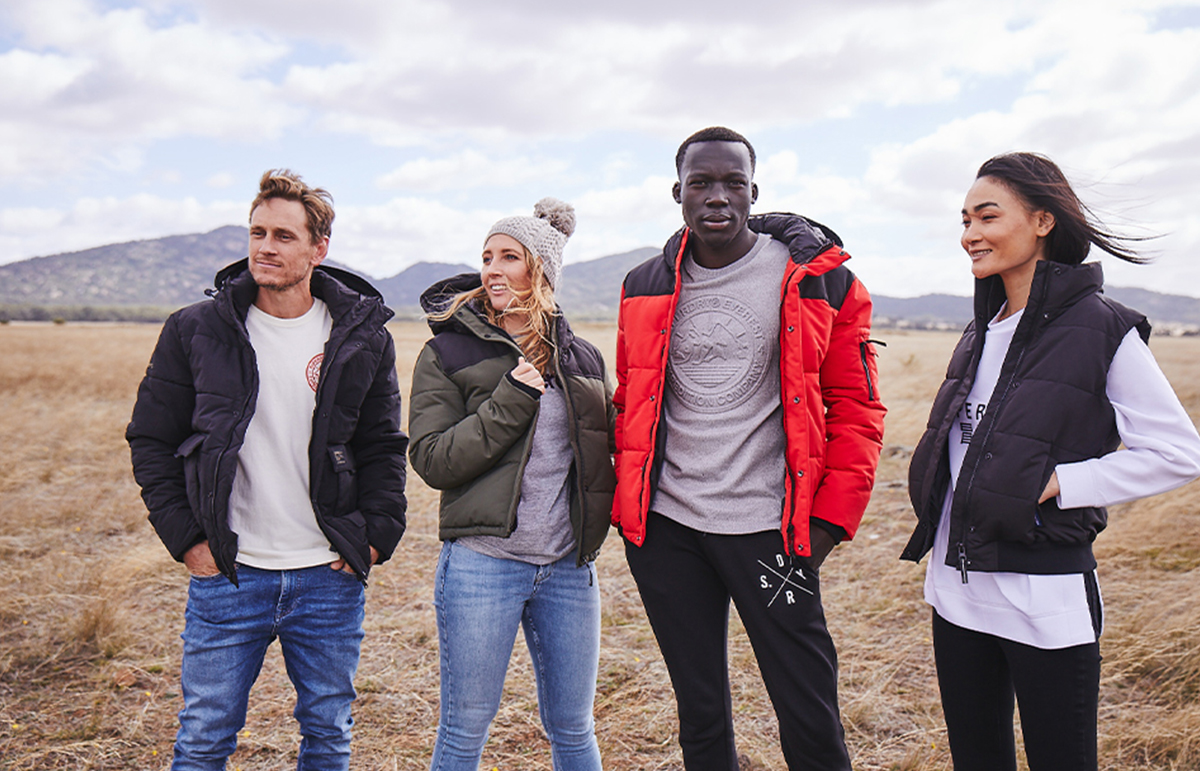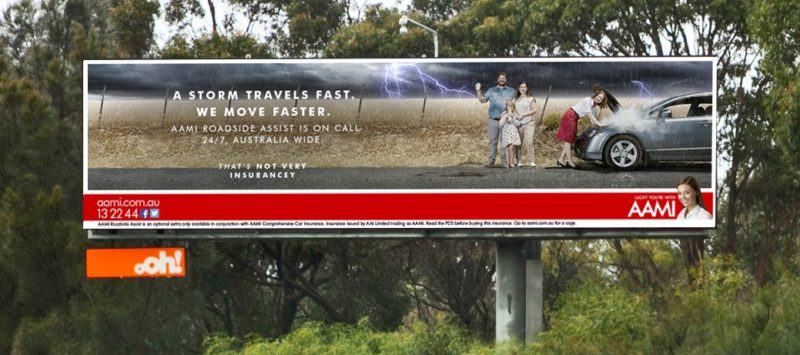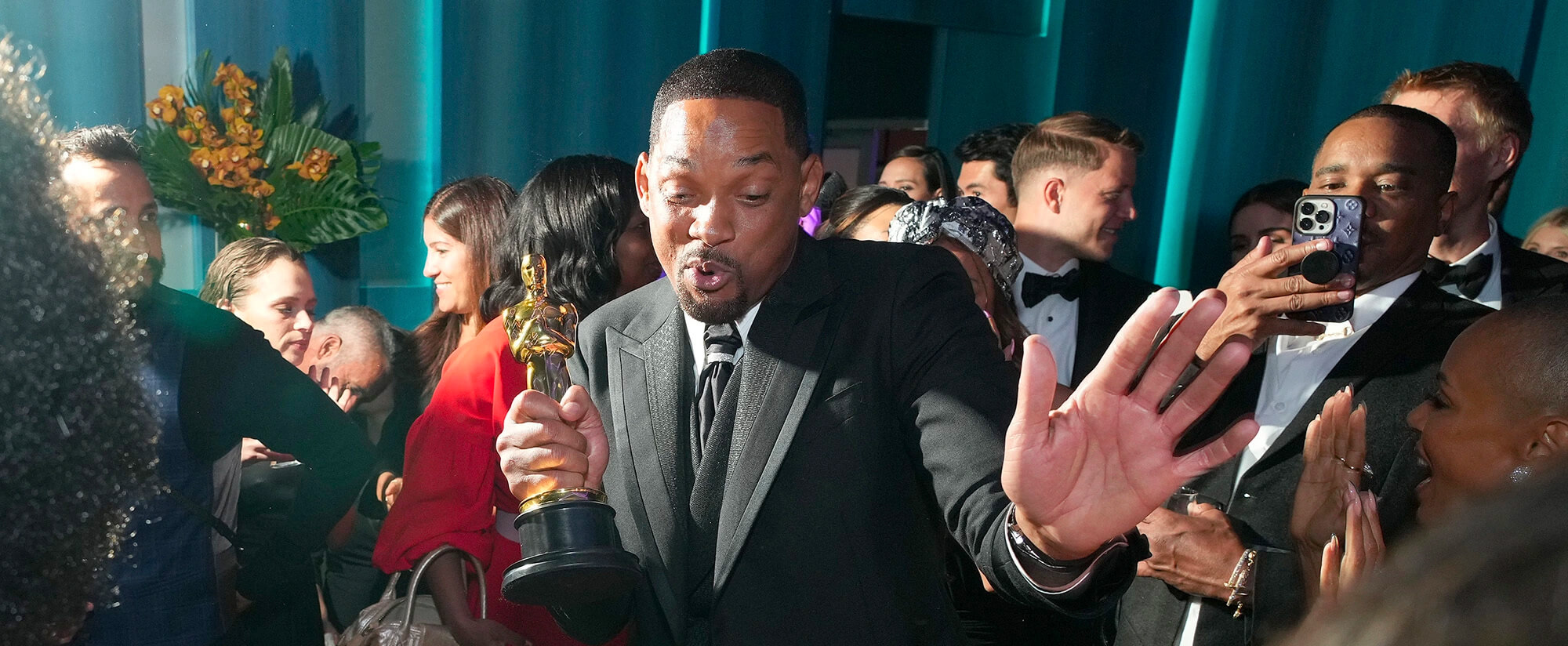Campaigns have always changed seasonally – just look at this 1912 ad for ‘winter soap’. The sad thing is that they haven’t evolved much over time. If we treated winter in the same way as other trending societal conversations and used it to gain insight into what consumers care about, then maybe we would see more than cold women wearing ‘life changing’ Oodie blankets… So here’s a run-down of where we could start.
Recognising and reflecting consumer experiences in winter
Rain does funny things to humans. What are you trying to protect in the rain? An outfit? Your hair? Do you drive more cautiously? How hard does the rain have to get before you start slowing down and thinking about your own mortality? The best ads are short reflections of our own behaviours that we may never have noticed before (or at least, never put into words). Think dashing between shop awnings to avoid the brunt of the rain, taking a comically long step to pass over a puddle, or walking through the rain because someone once told you that running would increase your exposed surface area. How would you feel seeing these behaviours referenced in a piece of marketing?
Here’s another example. Sunlight becomes a precious commodity in winter; for early risers, 5:30am starts were once greeted with soft pink hues on the horizon. Now, they mean upwards of another hour and a half of darkness. On the other end of the spectrum, more and more workers will be leaving the office at twilight or worse for the next few months. How does this affect us? What does it do to our mood? What are the nice and not-so-nice parts of the experience, and could they be reflected in an ad?
The specificity of these experiences, behaviours, and beliefs are the portals into insights that can connect a consumer with a brand or product.
“You’re like me. You just proved you get me so perfectly; you must understand what I want in a [car/jacket/headphones/shoes; insert product here].”
At the very least, consumers are more likely to believe a brand that gets them on one level will get them on another. As Seth Godin said, “People don’t believe what you tell them, and they rarely believe what you show them. They often believe what their friends tell them. They always believe what they tell themselves.”
If a consumer tells themselves that your brand understands them, you’ve fostered a space for connection and loyalty to thrive. But there’s no silver bullet; it’s a cumulative approach that should factor in every touchpoint and design choice along the way. The ad is just one piece of evidence among many that contribute to the consumer feeling understood.
Winter consumer purchasing behaviours
Some winter-specific consumer needs are obvious. For instance: the weather is getting colder, so people will be looking to update their winter wardrobe and buy more blankets and heaters for their home. Let’s take that to another level: people will want to escape the miserable weather, so they might consider booking holidays in sunny locations. Even deeper: online shopping spikes during cold weather. Not only because people want to stay indoors, but because they’re looking for mood-boosting experiences.
Even if you don’t incorporate winter themes into your campaign, you can still use this information to avoid marketing mishaps. There’s no point blowing your budget promoting an in-store deal when most people will be shopping at home. But how do you avoid becoming part of the landslide of cosy-jacket-wearing, tea-drinking clichés that appear at this time of year? Can you find a way to reflect the not-so-obvious authentic experiences rather than tired stereotypes?
Superdry’s 2021‘The Jacket to Own Winter’ campaign immediately comes to mind as a missed opportunity. The international fashion brand was aiming to present its jackets as the ultimate wardrobe necessity for the season. They enlisted Winter Olympics athletes and boldly claimed that the ad encouraged Aussies to do everything they couldn’t do in the lockdown winters. However, the generic scenes of friends wearing the jackets in various touristy locations across Victoria just felt empty. Perhaps if they had gone deeper than ‘people in winter need jackets,’ they could have created more meaningful connections with their consumers.

Aussie winter advertising vs. overseas
Winter means something completely different in the Northern hemisphere. Over there, it coincides with Christmas, and this influences practically all of the advertising. Brands focus on nostalgia, the importance of family, and the usual holiday clichés; advertising based solely on ‘winter’ is rarely seen. So, when it comes to creating marketing campaigns that are influenced by winter weather alone, Australia is mostly on its own.
Without that ability to look to iconic global brands, there aren’t many innovative winter campaigns Australians can use as inspiration. The closest we’ve gotten to challenging the well-trodden tropes of winter advertising is the 2021 Tasmanian tourism campaign, ‘The Call of the Off Season’. Did it use a lot of familiar wintery scenes? Yes. But the campaign also went in a fresh direction, aiming to reframe ‘off season’ tourism to Tasmania. The two 15-second films urged Australians to embrace the winter attractions, with Tourism Tasmania CEO, John Fitzgerald, claiming the ads showed that ‘winter is when we thrive’.

And it’s true, the ad makes you feel excited about an invigorating winter adventure in Tasmania. BMF’s group planning director Thomasine Burnap said the ad features ‘the almighty roar of a pagan bonfire, the hiss of a lakeside sauna, the beautiful mess of a seafood feast, or the throb of a festival stage’. These evocative scenes certainly created a strong campaign, but how can we take winter marketing further and connect to consumers on a deeper level?
Innovations around weather-sensitive advertising
One way that marketers can connect with consumers’ weather-related needs is by anticipating changes in the day-to-day weather, rather than creating blanket campaigns for whole seasons. Stella Artois analysed 12 years of Met Office data and found that the actual everyday weather had more of an impact on their sales than the seasons. This insight is a game-changer. When we anticipate weather events rather than reacting to them, we can reach customers at the exact moment they’re most receptive to a specific message. But how do we pull this off?
Take Pantene: they researched the key weather triggers for ‘bad hair days’ and then partnered with a weather channel so they could show ads on the pages that were forecasting these changes. This resulted in a 28% increase in sales. The ads themselves were pretty basic, but the tactic could easily be repurposed into a campaign with more powerful and emotionally resonant creative assets.
A bit closer to home: AAMI used current weather conditions in a 2016 outdoor advertising campaign for roadside assistance. They had a series of digital billboards, which would switch between versions of the ad depending on whether it was sunny, rainy, cloudy, or windy. A stormy version featured sinister lightning bolts behind a family on the side of the road; the caption read ‘a storm travels fast, we move faster’. Typical insurance slogan aside – the ad would have made an impact because of its incredible relevance in that moment.

Relevant solutions for outdoor weather worries
It’s an obvious connection: when you’re outside, the weather will affect you more. Also, if you’re targeting customers with time-sensitive advertising, then the location can matter too. Outdoor advertising is particularly useful for connecting with customers right when they need your specific solution; even more so if you can reflect the specific experiences they might have in that physical space.
Strategic outdoor advertising like this can position consumers to be much more receptive to the messaging. Ideally, the creative strives to complement a person’s day rather than interrupt it (we see you, YouTube ads). This means outdoor advertising is not only useful for providing in-the-moment solutions to winter woes; it’s also an opportunity to make a lasting impression and relate authentically to consumers.
Creative ways to use the changing seasons to your advantage
So, how do we use these innovations in time-sensitive weather advertising and outdoor marketing to move winter advertising forward? How do we take advantage of the opportunities that seasonal topics provide?
Well, a key takeaway would be that these techniques are all well and good; but if you just use them to target customers with generic content, then eventually the novelty will wear off. Surely, when the first online banner ad was seen in 1994, people didn’t scroll past it with a world-weary sigh like they do nowadays. If we use these weather-sensitive innovations to reflect relatable, entertaining, or emotional human experiences rather than convey a generic call-to-action, then maybe they won’t end up the same way.

We’ll leave you with one piece of Australian winter advertising that has succeeded in breaking the mould. Wunderman Thompson’s 2021 campaign for Anglicare WA, ‘The Cold Campaign’, was designed to highlight the plight of homeless people sleeping rough in the winter. Using the idea of ‘temperature contagion’ – where your body temperature cools just from hearing or seeing someone suffering from the cold – they created an ad that actually made listeners feel cold. How? Well, Wunderman Thompson put actor Liam Graham into a commercial freezer before he voiced the ad. It was well-received, winning the Gold and Silver Siren Awards for 2022’s best radio ad.
So, next time winter rolls around, try steering away from over-used concepts and surface-level references. Instead, look at the unique ways winter can affect the experiences of the consumers your brand speaks to. This way, you can create an authentic, emotion-led campaign that subverts expectations and delivers relevant solutions.











